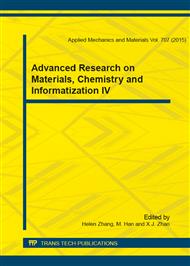p.121
p.126
p.133
p.137
p.144
p.149
p.154
p.158
p.163
Optimizing the Extraction Process of Rubusoside from the Rubus Suavissimus: A Cellulase Pretreatment Approach
Abstract:
The paper discussed the extraction process of rubusoside from Rubus suavissimus using a new technique named cellulase pretreatment approach. First, the parameters of cellulose which generate the optimized condition for the extraction of rubusoside from Rubus suavissimus were identified. Under the most optimal condition, the extraction efficiency is maximal. The parameters include pH value,temperature and enzyme-substrate ratio. Second, single factor experiment and an orthogonal test then could be conducted to obtain the optimized condition for the extraction process with the assistances of cellulose. The parameters under the optimized condition were determined as following: ethanol as solvent, 1.2% cellulose, 40°C, pH 4.8 and duration 25 minutes. The result shows that the extraction efficiency of rubusoside is 10.81%.
Info:
Periodical:
Pages:
144-148
Citation:
Online since:
December 2014
Authors:
Keywords:
Price:
Сopyright:
© 2015 Trans Tech Publications Ltd. All Rights Reserved
Share:
Citation:


